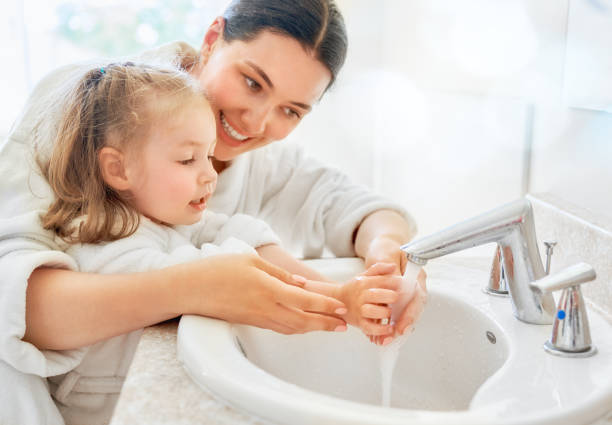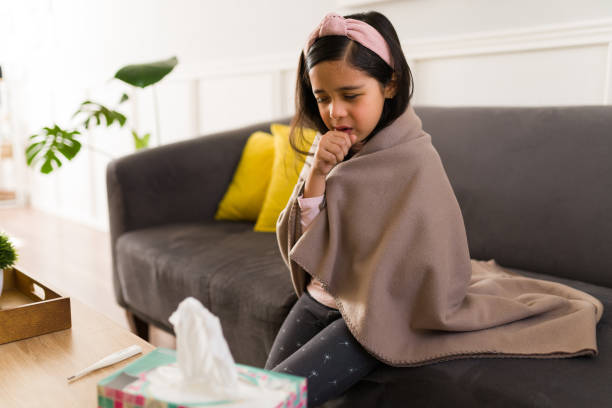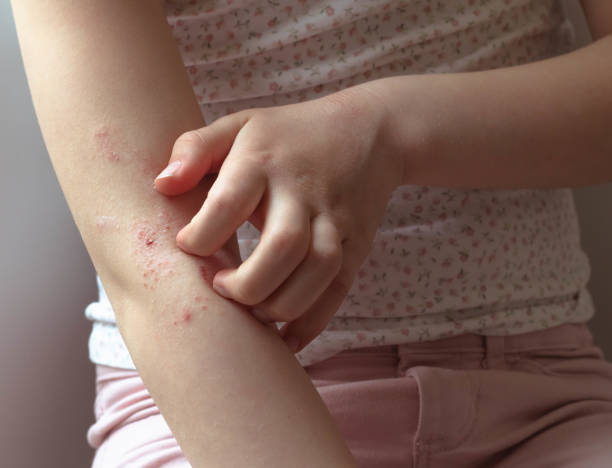Table of Contents
Introduction
As a parent, dealing with common childhood illnesses can be challenging. Whether it’s a cold, stomach illness, or something more serious, seeing your child unwell can cause stress and worry. However, with the right knowledge and preparation, you can handle these situations effectively and ensure your child’s comfort and recovery.
In this guide, we’ll cover the most common childhood illnesses, early symptoms to watch for, and the best ways to manage them. Understanding when to treat at home and when to seek medical advice will help you feel more confident in your role as a caregiver.
What Are Common Childhood Illnesses?
Common childhood illnesses refer to diseases and infections that are frequent among children, especially during the early years when their immune systems are still developing. These illnesses can range from mild colds to more severe conditions like ear infections, strep throat, or conjunctivitis.
Common Childhood Illnesses Include:
- Cold and Flu
- Ear Infections
- Chickenpox
- Stomach Flu (Gastroenteritis)
- Hand, Foot, and Mouth Disease
- Strep Throat
- Conjunctivitis (Pink Eye)
Identifying Early Symptoms of Common Childhood Illnesses
One of the first steps in managing common childhood illnesses is knowing the signs and symptoms. Early detection helps parents decide if home treatment is sufficient or if it’s time to visit the pediatrician.
Key Symptoms to Look Out For:
- Fever – A sign of infection or inflammation
- Coughing or Runny Nose – Often a symptom of a cold or respiratory infection
- Rashes – Can indicate chickenpox, hand, foot, and mouth disease, or other viral infections
- Vomiting and Diarrhea – Often a sign of stomach flu or food poisoning
- Ear Tugging or Complaints of Ear Pain – Common with ear infections
- Sore Throat – Can indicate strep throat or other viral infections
Monitoring your child’s symptoms and behavior will help you respond quickly to their needs and seek professional medical advice when necessary.
How to Handle Common Childhood Illnesses at Home
In many cases, common childhood illnesses can be managed effectively at home with supportive care. Here’s how to treat some of the most common illnesses your child may experience.
1. Cold and Flu
Colds and flu are two of the most frequent illnesses children face. They often come with congestion, coughing, and fatigue.
Best Ways to Manage:
- Offer fluids to keep your child hydrated.
- Use a cool-mist humidifier to ease breathing.
- Give age-appropriate fever-reducing medicine if necessary (always consult a pediatrician first).
- Encourage rest to help the immune system fight the infection.
For the flu, a visit to the doctor may be required if the symptoms worsen or if there are concerns about complications, such as difficulty breathing.
2. Ear Infections
Ear infections are common in young children and can cause discomfort or pain. These are often a result of bacteria or viruses that affect the middle ear.
Best Ways to Manage:
- Use a warm compress to relieve ear pain.
- Give pain relief medicine as recommended by your pediatrician.
- Encourage your child to rest.
- In some cases, antibiotics may be required if a bacterial infection is diagnosed.
If symptoms persist for more than a few days, it’s important to consult a healthcare provider.
3. Chickenpox
Chickenpox is a highly contagious viral infection that causes an itchy rash and flu-like symptoms. Vaccination can help prevent it, but if your child catches chickenpox, the illness is usually mild in younger children.
Best Ways to Manage:
- Keep your child home to avoid spreading the infection.
- Use calamine lotion or oatmeal baths to soothe itchy skin.
- Provide fever-reducing medication to keep your child comfortable.
- Make sure your child gets plenty of rest and fluids.
If your child shows signs of complications, such as difficulty breathing or a high fever, seek medical care immediately.
4. Stomach Flu (Gastroenteritis)
Stomach flu, often caused by viruses like rotavirus or norovirus, results in vomiting, diarrhea, and stomach cramps.
Best Ways to Manage:
- Keep your child hydrated by offering small sips of water or electrolyte drinks.
- Avoid solid foods until vomiting stops, then reintroduce bland foods like crackers and toast.
- Wash your hands thoroughly to prevent the spread of the virus.
- Rest is essential to allow the body to recover.
If vomiting and diarrhea last for more than a few days or if your child shows signs of dehydration, consult a doctor.
5. Hand, Foot, and Mouth Disease
This viral infection is most common in children under 5 and causes a rash on the hands, feet, and mouth along with a fever.
Best Ways to Manage:
- Offer fluids to prevent dehydration (cold drinks or ice pops can be soothing).
- Use fever reducers if necessary, following your pediatrician’s advice.
- Ensure your child gets enough rest.
Hand, foot, and mouth disease usually resolves on its own, but see a doctor if complications arise.
6. Strep Throat
Strep throat is a bacterial infection caused by Group A Streptococcus bacteria, leading to a severe sore throat, fever, and sometimes a rash. It’s highly contagious and often requires antibiotics for treatment.
Best Ways to Manage:
- Use throat lozenges or warm saltwater gargles for pain relief.
- Give fever-reducing medication to keep your child comfortable.
- Ensure your child gets plenty of rest and fluids.
If strep throat is suspected, a visit to the doctor is essential to get an accurate diagnosis and treatment with antibiotics.
7. Conjunctivitis (Pink Eye)
Conjunctivitis, commonly known as pink eye, causes redness, itching, and discharge in one or both eyes. It can be caused by a bacterial or viral infection or by allergies.
Best Ways to Manage:
- Use a cool compress to soothe itching and swelling.
- Wash hands frequently to avoid spreading the infection.
- Avoid touching the eyes and encourage your child to use tissues to wipe away discharge.
If bacterial pink eye is suspected, antibiotics may be needed, so consult your pediatrician for guidance.
When to Seek Medical Help for Common Childhood Illnesses
While most common childhood illnesses can be treated at home, there are times when you should seek professional help.
When to Visit a Doctor:
- Your child has difficulty breathing or shortness of breath.
- There is a high fever that doesn’t go down with fever-reducing medications.
- Symptoms persist for more than a few days without improvement.
- Your child is extremely lethargic or has trouble waking up.
- Vomiting and diarrhea lead to signs of dehydration (dry mouth, no tears, or less urination).
- Your child complains of severe pain (like ear or stomach pain).
Trust your instincts—if you feel something is not right, it’s always best to consult a healthcare professional.
Preventing Common Childhood Illnesses
The best way to handle common childhood illnesses is to prevent them from occurring in the first place. Here are a few preventive measures you can take:
Vaccinations – Make sure your child is up to date with their vaccinations to prevent diseases like chickenpox, flu, and whooping cough.

Hand Hygiene – Encourage regular handwashing, especially before meals and after using the bathroom.

Healthy Eating – A balanced diet rich in fruits, vegetables, and whole grains boosts the immune system.

Adequate Sleep – Ensure your child gets enough sleep to support their immune function.

Avoid Crowded Places – During flu season or when a virus is circulating, try to avoid crowded areas to reduce exposure.

Final Thoughts: Be Proactive and Prepared
Handling common childhood illnesses can be stressful, but by knowing how to recognize symptoms early and manage symptoms at home, you can help your child recover quickly. Always trust your instincts as a parent, and don’t hesitate to seek medical help if necessary. Prevention through good hygiene, proper nutrition, and vaccinations can also go a long way in keeping your child healthy.
Take charge of your child’s health today. Stay informed, stay prepared, and help your little one through any illness with confidence.
Frequently Asked Questions
What are the most common childhood illnesses?
The most common childhood illnesses include colds, flu, ear infections, chickenpox, hand, foot, and mouth disease, strep throat, and conjunctivitis. These are typically mild but can cause discomfort.
How can I prevent common childhood illnesses?
Prevention includes vaccinations, regular handwashing, a balanced diet, adequate sleep, and avoiding crowded places during flu season. These habits reduce exposure and support immune health.
How do I know when to seek medical help for a common childhood illness?
Visit a doctor if your child has difficulty breathing, persistent high fever, severe pain, or symptoms that don’t improve within a few days. Always trust your instincts and seek help if something feels off.
Are ear infections common in children?
Yes, ear infections are one of the most frequent common childhood illnesses, particularly in younger children. They are often caused by bacteria or viruses and can be treated with medications or home care.
How can I treat a cold or flu at home?
To treat a cold or flu, keep your child hydrated, use a humidifier, offer fever-reducing medicine, and encourage plenty of rest. If symptoms worsen or last more than a few days, consult a pediatrician.



